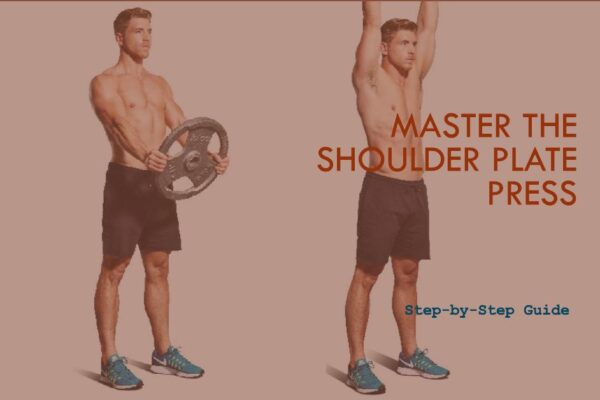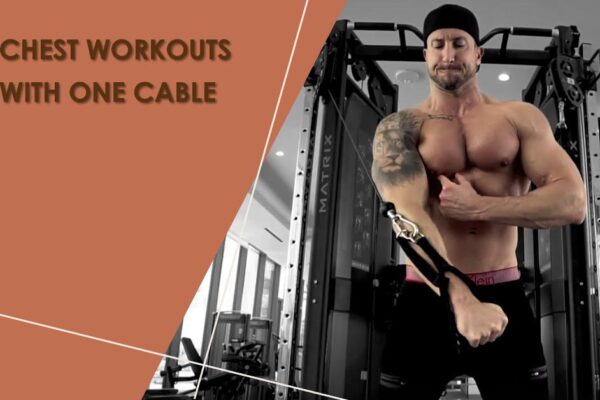In the fitness world, the hammer grip bench press is a cool and effective way to boost your chest and strength. Instead of the usual grip, you use a unique hammer grip that adds a new twist to your workout. Let’s check out why this exercise is awesome, how to do it right, and why you should include it in your routine for a stronger and more sculpted chest.
What is a hammer grip bench press?
The hammer grip bench press is a variation of the traditional bench press, distinguished by the grip used during the exercise. Instead of the conventional palms-forward grip, the hammer grip involves holding the dumbbells or barbell with a neutral, palms facing each other position.

Also Read: Guide to Seated Dumbbell Hammer Curls: Forms and Benefits
Hammer Grip Bench Press Muscles Worked
The hammer grip bench press is a cool variation of the regular bench press. It’s not only new and exciting but also works different muscles in your body. Let’s take a look at which muscles it targets.
Primary Muscles
- Chest (Pectoralis Major): This big chest muscle is the main player, pulling your arms in toward the center of your body.
- Arms (Triceps Brachii): Back of your upper arms – these guys help straighten your elbows as you lift the weight.
- Shoulders (Anterior Deltoids): The front part of your shoulders – they get involved as you push the weight up.
Secondary Muscles
- Shoulder Blades (Serratus Anterior): On the sides of your chest, this helps stabilize your shoulder blades during the exercise.
- Arm and Shoulder Support (Coracobrachialis): Deep in your arm, it helps with controlled lowering of the weight.
- Arm (Biceps Brachii): Although not the star, they help control the weight on the way down.
In short, the hammer grip bench press works your chest, arms, and shoulders, and engages various supporting muscles for overall upper body strength and stability.
How to Perform Hammer Grip Bench Press
A. Set-Up and Equipment Needed
To perform the hammer grip bench press exercise, you will need the following equipment:
- Barbell or Dumbbells: Pick a challenging weight.
- Bench: Choose a flat and sturdy bench.
- Rack (Optional): For barbell users, adds a safe starting point.
B. Step-by-Step Guide
Here’s a detailed breakdown of how to execute the exercise correctly:
- Initial Position
- Lie down on a flat bench with your feet planted firmly on the ground.
- Grip the barbell or dumbbell with a neutral or hammer grip, palms facing each other and thumbs wrapped around the bar.
- Execution of the Exercise
- Lift the bar off the rack and hold it directly over your chest with your arms fully extended.
- Lower the barbell or dumbbell in a controlled manner towards your chest, keeping your elbows slightly tucked.
- Once the barbell lightly touches your chest, push it back up to the starting position by extending your arms.
- Breathing Tips
- Inhale as you lower the bar towards your chest.
- Exhale as you push the bar back up to the starting position.
Remember to maintain proper form throughout the exercise to ensure safety and effectiveness. Start with a lightweight to master the movement before gradually increasing the load.
Hammer Grip Bench Press Benefits
The hammer grip bench press isn’t just a variation; it’s a game-changer for your chest workout. Let’s break down the simple and easy benefits that make this exercise a must-try in your fitness routine.
1. Targeted Muscle Engagement:
- The hammer grip activates not only your chest muscles but also brings your triceps and shoulders into the game. It’s a one-stop shop for comprehensive upper body development.
2. Wrist-Friendly Technique:
- Say goodbye to wrist strain. The neutral grip of the hammer grip bench press aligns your wrists naturally, reducing stress and promoting joint health.
3. Stability Boost:
- Experience enhanced stability during the exercise, thanks to the neutral hand position. It’s a simple tweak that minimizes imbalances and promotes overall balance and control.
4. Adaptable for All Levels:
- Whether you’re a beginner or a seasoned lifter, the hammer grip bench press is adaptable. Start with a comfortable weight and progress at your own pace.
5. Versatility in Your Routine:
- Spice up your chest workout by incorporating the hammer grip. It pairs well with other exercises, adding variety and ensuring a well-rounded routine.
Variations of Hammer Grip Bench Press
Explore some fun twists to your workout with these easy hammer grip bench press variations. Let’s keep it simple with a quick guide to a couple of options.
1. Incline Hammer Grip Bench Press
Step-by-Step Guide:
A. Set-Up:
- Adjust the bench to a 15-30 degree incline.
- Follow the same setup as the traditional hammer grip bench press.
B. Initial Position:
- Sit or lie on the inclined bench.
- Grab the barbell or dumbbells with a neutral grip.
C. Execution:
- Lower the weight to your upper chest with control.
- Press the weight back up, engaging your upper chest muscles.
D. Benefits:
- Targets the upper chest for a more well-rounded development.
- Provides a variation to challenge your muscles differently.
2. Dumbbell Hammer Grip Floor Press
Step-by-Step Guide:
A. Set-Up:
- Lie on your back on the floor.
- Grab a dumbbell in each hand with a neutral grip.
B. Initial Position:
- Position your elbows on the floor, creating a 90-degree angle.
- Maintain a firm grip on the dumbbells.
C. Execution:
- Press the dumbbells upwards, extending your arms.
- Lower the dumbbells back down to the starting position.
D. Benefits:
- Reduces shoulder strain by limiting the range of motion.
- Engages the chest and triceps effectively.
3. Single-Arm Hammer Grip Bench Press
Step-by-Step Guide:
A. Set-Up:
- Use a flat bench and a dumbbell.
- Lie on your back with the dumbbell in one hand.
B. Initial Position:
- Keep your feet planted and maintain stability.
- Hold the dumbbell with a neutral grip.
C. Execution:
- Lower the dumbbell to your chest in a controlled manner.
- Press it back up, engaging your chest and triceps.
D. Benefits:
- Enhances stability and isolates each side for balanced development.
- Requires focus on core engagement.
Tips to Maximize Results and Safety
To maximize results and ensure safety while performing the exercise, follow the below tips,
- Warm-Up: Always start with a proper warm-up routine.
- Grip & Shoulder Stability: Maintain a secure grip and stabilize your shoulders.
- Neutral Spine: Keep your back in a neutral position.
- Controlled Movements: Focus on controlled motions throughout the exercise.
- Breathing: Coordinate your breath with your movements.
- Full Range of Motion: Lower the weights fully and press them back up.
- Appropriate Weight: Choose a weight that allows proper form.
- Progressive Overload: Gradually increase the resistance over time.
- Rest: Take adequate rest between sets.
- Cool Down: Finish with some gentle stretches.
By following these tips, you can optimize your results and maintain a safe workout routine.
Common Mistakes to Avoid
- Neglecting Warm-Up: Skipping a proper warm-up increases the risk of injury.
- Poor Grip: Failing to maintain a secure grip on the weights can lead to accidents.
- Shoulder Instability: Not stabilizing the shoulders increases the risk of strain.
- Improper Spine Alignment: Failing to keep the spine neutral can cause back strain.
- Jerky Movements: Rapid or jerky motions can lead to muscle strain or injury.
- Incorrect Breathing: Not coordinating breath with movements can compromise stability.
Frequent Question Answers
By addressing the following frequently asked questions, we hope to provide clarity and guidance on incorporating the Hammer Grip Bench Press exercise into your fitness routine. Remember to listen to your body, start at an appropriate level, and gradually progress for optimal results.
| Question | Answer |
|---|---|
| Is Hammer’s bench press good? | When using the hammer grip and bringing the elbows close to the body, the chest muscles don’t effectively lengthen, and the load is borne differently. |
| Is Hammer’s bench press good? | The hammer press, especially with a neutral grip, is beneficial for taking stress off the shoulder and still building chest strength. |
| What are the benefits of hammer press? | Switching to a neutral grip in dumbbell bench presses to perform the hammer press takes stress off the shoulder and still builds chest strength. |
| Which grip is better for the bench? | The effectiveness between hammer grip and regular grip in dumbbell bench press differs in terms of muscle engagement and load distribution. |
| Which grip is better for the bench? | The choice between a hammer grip and a normal grip depends on the individual’s training goals, muscle engagement, and load distribution preferences. |
| What is the strongest grip form? | The hammer grip, especially with a neutral grip, can be a strong form for taking stress off the shoulder and still building chest strength. |
Conclusion
In conclusion, the hammer grip bench press offers a unique and effective way to target the chest muscles while reducing shoulder stress. By incorporating this variation into your workout routine, you can enhance your chest strength and stability, ultimately leading to improved overall upper body strength.
Embrace the challenge of trying new variations like the hammer grip bench press to continually push your fitness boundaries. By diversifying your workouts, you not only keep things exciting but also engage muscles in different ways, fostering balanced and comprehensive strength development. Remember, every variation brings an opportunity for growth and progress. Keep pushing, keep lifting, and keep growing stronger!
Sources
- Hammer-grip dumbbell bench press
- The Effects of Bench Press Variations in Competitive …
- What Is a Hammer Strength Chest Press? – Livestrong
- Hammer-grip Dumbbell Bench Press (Chest)
- Dumbbell Incline One Arm Hammer Press | A Strength …
- Bench Press: Muscles Worked, Benefits, How to, Variations …
- What’s better for upper chest hypertrophy, incline hammer …






Leave a Reply